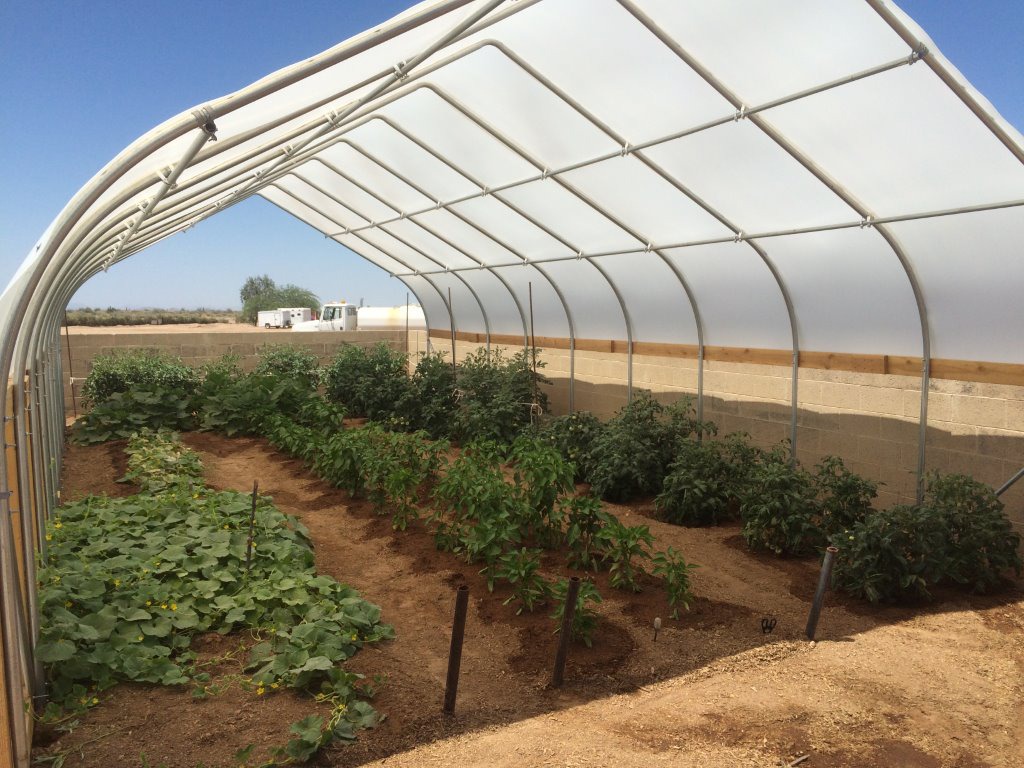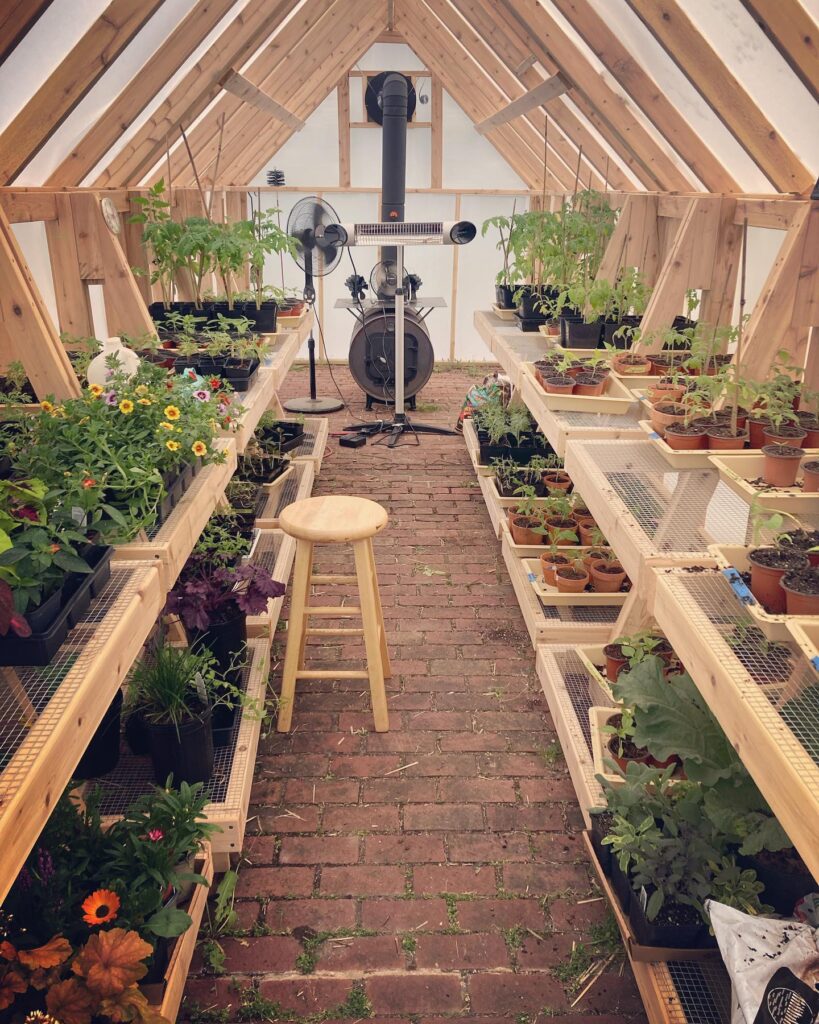Whether you’re a novice gardener or a seasoned pro, a well-planned greenhouse space will provide you with endless opportunities to grow and enjoy your favorite plants. So how can you go about setting up the ideal greenhouse space? Is it best to use benches in the greenhouse or grow directly in the ground?
The choice between using benches and growing in the ground in your greenhouse depends on several factors, including the types of plants you’re growing, the specific benefits each method offers and of course, your personal preference. Let’s explore the pros and cons of both options to help you create a well-planned space!
Benches in the Greenhouse
The Benefit to Benches
- More Space to Grow: Benches elevate your plants and create additional square footage for growing, while allowing you to utilize the ground area below. In some greenhouses the ground space may only be suitable for shade plants or storage. If your greenhouse has diffuse light (like Solexx greenhouses), tiered shelves can provide even more space because the plants won’t block the light. [Read more about diffuse light]
- Ease of Access: Gardening on benches means less bending and stooping, which is easier on your back and knees. If you have physical limitations benches are an ideal option.
- Organized Space: Benches allow you to organize your plants more efficiently, making it easier to sort plants by their requirements and keep track of your gardening activities.
- More Flexibility: Since benches mean container growing, you can move plants in and out of the greenhouse easily. For example, bring plants inside during cold snaps, or remove diseased plants to protect the healthy plants.
- Pest Control: Elevating plants on benches can help keep them out of reach of some ground-dwelling pests like rabbits and slugs.
Drawbacks of Benches
- Cost: Installing benches is an additional expense. Depending on the materials and design, it might require a significant investment.
- Space Limitation: Benches can limit the plant options in your greenhouse. If a plant is too tall it may outgrow the bench.
- Watering Requirements: Plants on benches may need more frequent watering as they tend to dry out faster compared to those grown in the ground.

Growing in the Ground
Benefits of In-Ground Growing
- Natural Environment: Growing plants directly in the ground allows them to establish a more natural root system, which can lead to healthier and more robust growth.
- Cost-Effective: This method eliminates the need for additional structures like benches, making it a more economical choice.
- Water Retention: The ground retains moisture more effectively than pots or containers on benches, reducing the frequency of watering.
Drawbacks of In-Ground Growing
- Pest and Disease Risk: Plants grown in the ground are more susceptible to soil-borne pests and diseases, which can sometimes necessitate more vigilant monitoring and intervention.
- Accessibility: Gardening at ground level can be physically demanding, requiring more bending, kneeling, and stooping.
- Soil Management: Maintaining healthy soil in a greenhouse can be challenging, requiring regular amendments and monitoring to ensure optimal plant growth conditions.
- Adaptability: It is not easy to move plants to a better location if they are in the ground.
Finding the Right Balance
Ultimately, the best approach might be a combination of both methods, tailored to suit your specific gardening needs. For instance, you could use benches for seedlings and delicate plants that require special attention, while utilizing the ground space for larger, more resilient plants that can benefit from the natural soil environment. Perhaps devote one side to ground growing and build a bench system on the opposite side.
Tips for a Balanced Greenhouse Setup:
- Modular Benches: Consider using modular benches that can be easily moved or adjusted. This flexibility allows you to optimize your space based on the season and your gardening needs.
- Raised Beds: Installing raised beds in your greenhouse can offer a compromise between ground growing and bench use, providing the benefits of both methods.
- Integrated Pest Management: Whether you choose benches or ground growing, adopting an integrated pest management strategy can help you keep your plants healthy and thriving.
- Efficient Watering Systems: Invest in an efficient watering system, such as drip irrigation or soaker hoses, to ensure your plants receive adequate moisture without overwatering.
By carefully planning your greenhouse layout and considering the pros and cons of benches versus ground growing, you can create a versatile and productive space that caters to a wide variety of plants and gardening techniques. Happy gardening!
Tips for Greenhouse Bench Designs:
- Material: Wood bench frames are popular because they are easy to build and customize to your specifications. Topping them with a chicken wire works well due to the durability, excellent drainage, and airflow, plus their inexpensive.
- Height: Consider the height of your work benches to ensure comfortable working conditions. Adjustable height benches are a great option for ergonomic flexibility. Creating double-tiered benches allows for more room to start seedlings.
- Mobility: Rolling benches are ideal for maximizing space in small or narrow greenhouses. They can be moved to create aisles or to maximize growing space as needed.
Provide Adequate Ventilation: Proper airflow is essential for preventing disease and promoting healthy plant growth. Install vents or fans to ensure adequate ventilation throughout the greenhouse.
Optimize Layout: Start by planning the layout of your benches to maximize space and accessibility. Don’t forget to leave enough room for aisles between benches to allow for easy movement and maintenance.



This very creative raised bed system is not only visually interesting, it leaves room for extra access to the beds. On the left the raised beds are bursting with plants and growing vertically.








Leave a Reply